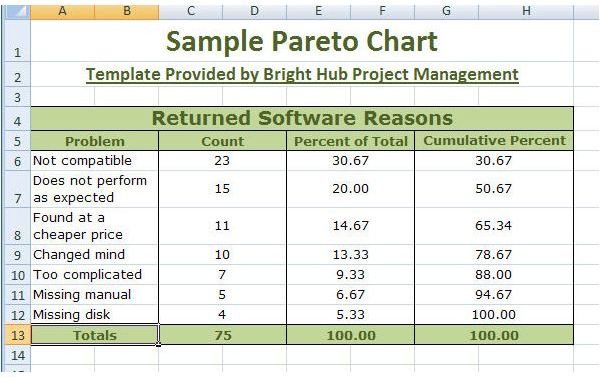An Overview of Six Sigma: Top Six Questions About Six Sigma
Overview of Six Sigma
Since its formulation in 1986 at Motorola, Six Sigma has spread like a wildfire throughout corporate America. Unlike trendy methodologies that pass through the business world and disappear as quickly as they came, Six Sigma is here to stay. There are a number of articles here on Bright Hub’s Project Management Channel that go into the details of this process, but the purpose of this segment is to give an overview of Six Sigma for those who are new to the subject. See the last section of this article for a list of recommended further reading as well as a link to free templates you can download for use in Six Sigma related projects.
What is Six Sigma anyway?
Six Sigma is a business management strategy that focuses on improving processes and solving quality-related problems by finding ways to minimize defects in a good or service. Take a look at How to Implement Six Sigma for a more detailed discussion on this topic.
Do I have to be a math genius to learn and use Six Sigma?
No, not at all. Some Six Sigma components require statistics so that improvement and quality can be measured. However, very few Six Sigma tools involve anything more complex than basic statistics. Many of the results are expressed in terms of raw numbers or percentages.
What do the acronyms DMAIC, DMADV and DFSS mean?
There are two key methodologies used in Six Sigma projects, one for dealing with existing processes and another for implementing new processes. DMAIC is an acronym for Define-Measure-Analyze-Improve-Control, the five Six Sigma components that are utilized in a project designed to improve existing practices.
Likewise, DMADV stands for Define-Measure-Analyze-Design-Verify, the steps taken in the creation of a new product or service design.DFSS, or Design for Six Sigma, is simply another name for the DMADV process.
If you would like to explore these Six Sigma components in more detail, this article on the purpose of Six Sigma, or this document offered by the Carnegie Mellon Software Engineering Institute are great places to start.
What’s the difference between Six Sigma and Lean Six Sigma?
Lean Six Sigma is a melding of Six Sigma components with those from Lean Manufacturing. While Six Sigma focuses on the quality of the final product or service, Lean is primarily concerned with speed and the elimination of waste and unnecessary steps. In Lean Six Sigma, these two approaches are consolidated in recognition that both speed and quality are important. Click the link for more information on the topic of Lean Six Sigma.
Is Six Sigma the only project management methodology I’ll ever need?
No. Six Sigma is a powerful tool for process improvement, but it is not a replacement for general project management. Many of the Six Sigma components can be applied to make any project run more smoothly and efficiently, but they should only be incorporated into your project management program when applicable.
When should Six Sigma be used?
The answer to this question can vary a great deal depending on the type of business involved. In general, whenever there are processes that generate a lot of negative customer feedback, whether that customer is internal or external, the components of Six Sigma should be considered as a means to study and rectify the problem.
